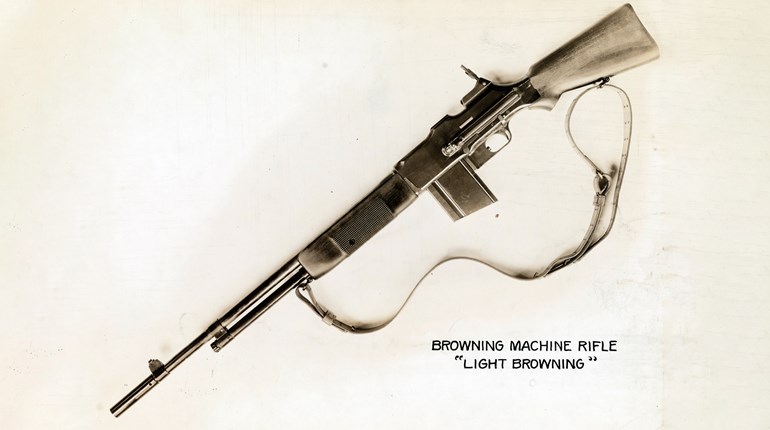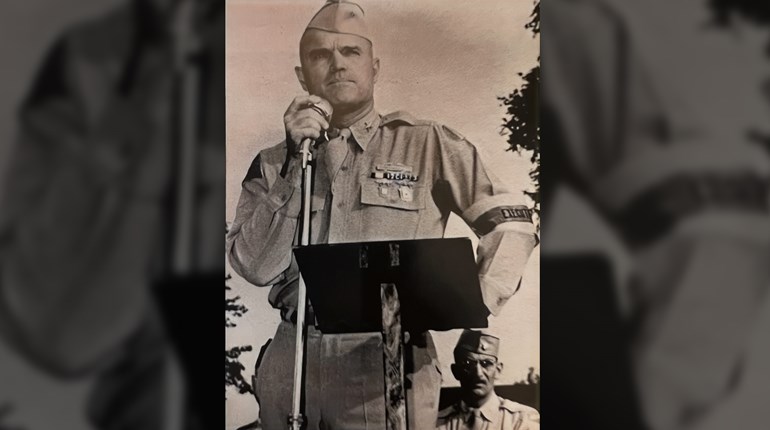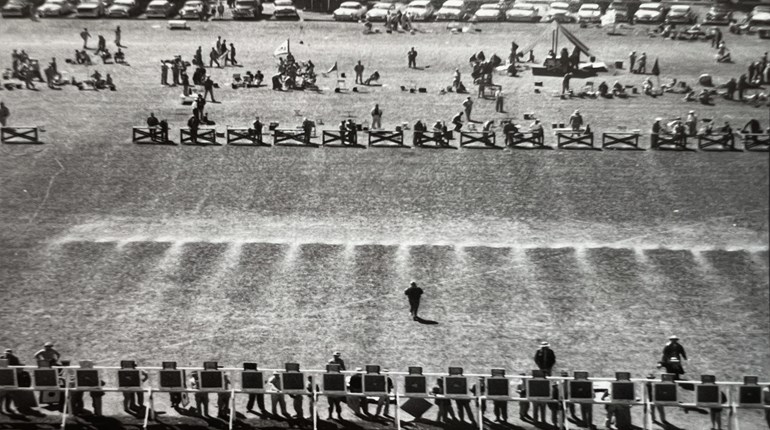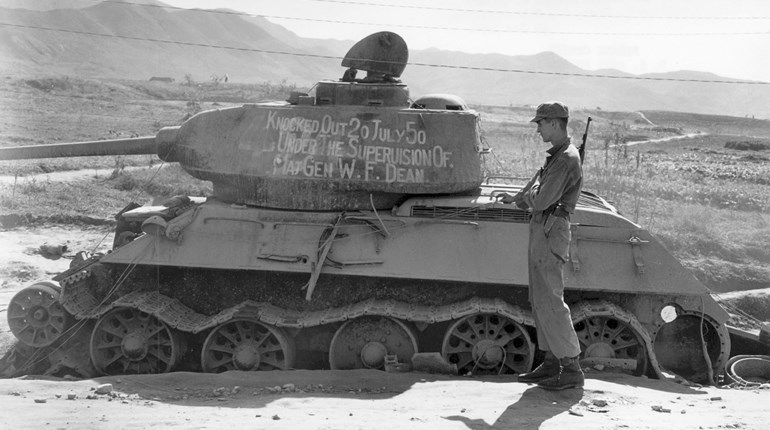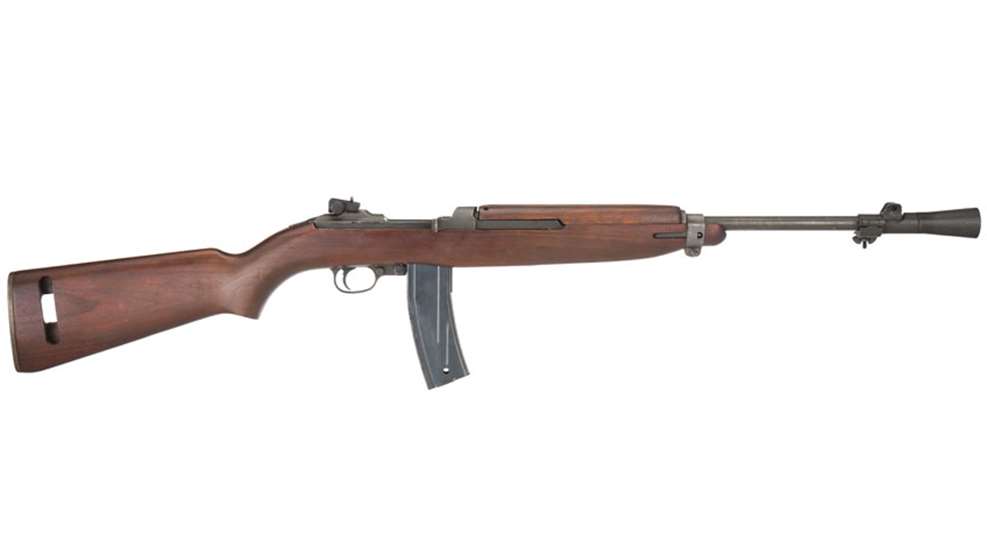
Feb. 4, 1945, Manila. Technician 5th Grade Paul C. Nola had volunteered to go to the city to join the battle, and he did so for a very specific reason. Even as the war was drawing to a close, the Army was continuing to introduce new weapons, and CPL Nola was there to evaluate one in combat. It was a modification of the M1 Carbine designated T4 during design development, and it allowed for fire in both semi-automatic and full-automatic modes. On Oct. 26, 1944, it became the “U.S. Carbine, Caliber .30, M2.”
By January 1945, the M2 Carbine had been tested in combat in the European theater, but not in the Pacific. As fate would have it, Paul Nola would have a chance to use the new, selective-fire carbine on February 4 in Manila, because there was an urgent need to deliver medical supplies to Allied personnel isolated at the Santo Tomas Internment Camp. The 1st Cavalry Division had pushed a column through to the camp the day before, but had not been able to secure its route of advance through the devastated city streets. When enemy forces counterattacked overnight, the 1st Cav troops were trapped at Santo Thomas.
With the clock ticking, a call for volunteers went out first thing that morning and a group of men stepped forward to fight their way through to the camp. The mission was almost guaranteed to make contact with Japanese forces, and that was exactly what Paul Nola was there looking for, so he volunteered and grabbed his M2.

During the infiltration toward the camp 2 hours later, a car suddenly roared down Rizal Street toward the relief force. Since this constituted its first contact with the enemy, everyone agreed to hold their fire and let Nola take-on the vehicle. Using a 30-round magazine, he opened fired with his M2 Carbine from a range of 60 yards and quickly neutralized the car with eight short bursts. Soon thereafter, he used it again to take out a sniper firing from the roof of a nearby three-story building.
Then, a small group of Japanese troops opened up on the relief force and Nola used his M2 to lay down effective suppressing fire while other troops moved into position to bring their weapons into the fight. During this engagement, Nola fired three 30-round magazines, one after the other. Although the T4 was smoking after dumping 90 rounds, it nevertheless functioned perfectly. By the time the volunteers reached Santo Tomas with the urgently needed medical supplies that afternoon, the new selective-fire M2 Carbine had turned-in “an exemplary performance” and aroused “enthusiastic and favorable comments from all observers.”
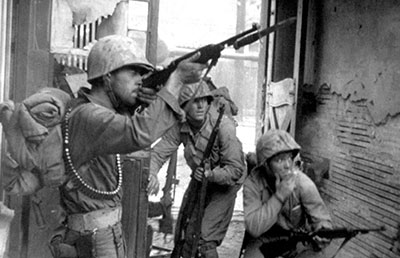
The M2 Carbine’s origin dates back to October 1940 when the Army first issued a specification for a “self-loading type” rifle “capable of being fired either semiautomatically” or “automatically” to replace the M1911A1 .45-caliber pistol. By the time the Army adopted the gun a year later, it was the semi-auto-only M1 Carbine that famously did so much fighting during the World War II. So in a way, the development of a selective-fire conversion of the M1 was a return to what the Army had wanted from the start.
Getting there came down to a pair of engineers at the Inland Division of General Motors who designed a kit consisting of just nine components, some of which were entirely new, and some of which were simply modifications of existing M1 Carbine parts. Once installed, these parts modified the semi-auto-only M1 into the selective-fire M2. The process of creating this modification was carried out with industrial design in mind, such that mass production of the gun could be established with a minimum interruption to the already-existing workflow output.
A critical aspect of that success was that the new design did not require modification of the M1’s receiver, so existing semi-automatic carbines could be easily converted while the assembly line of new guns barely slowed down.
By April 1945, Inland had completed the changeover to M2 production, but the gun did not meaningfully write itself into the history of the conflict that ended later that year. While it fought battles in both the ETO and the PTO, the M2 Carbine story achieved greater substance during the Korean War when it emerged as one of the primary guns arming United Nations troops. It served throughout the war in Vietnam with U.S. and ARVN units, but that conflict marked the end of its era.
The introduction of the AR-15/M16 pushed the M2 Carbine toward the threshold of obsolescence, but still this product of wartime innovative competence had a military-service life that extended into the 1970s. Although it never did manage to replace the pistol, it did manage to write itself into American military history, and Paul C. Nola wrote one of the earliest chapters of that unique history in the streets of Manila.












